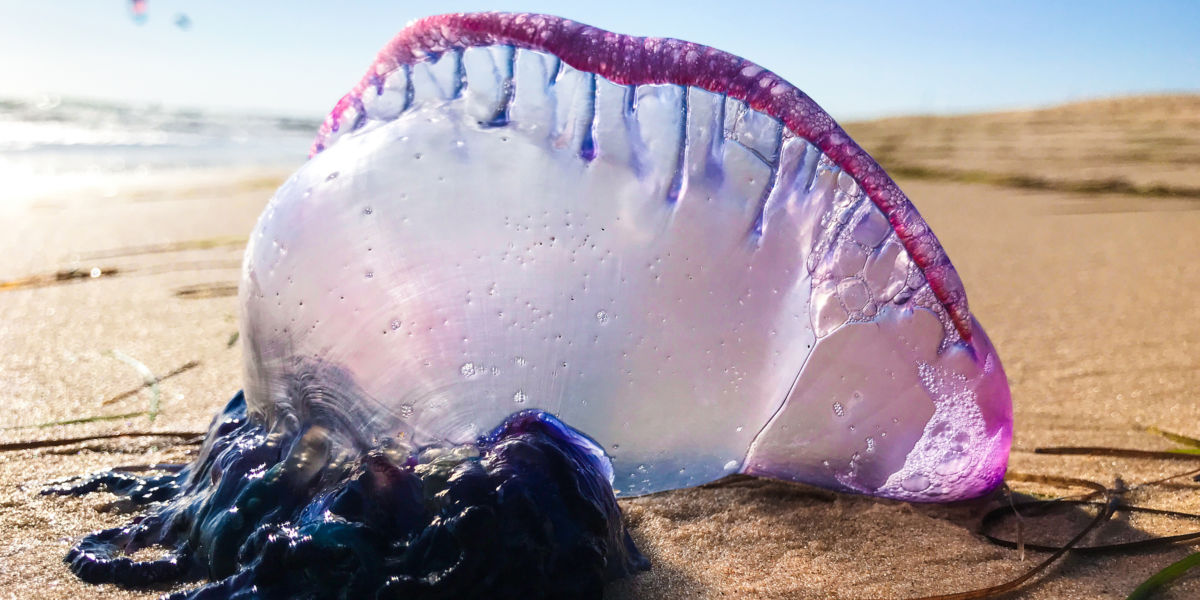
Zap! A Flotilla of Stinging Portuguese Men-of-War Is Invading Oahu
Here’s how to avoid getting stung, and what to do if it does happen

Lifeguards on the Hawaiian island of Oahu are reporting that thousands of Portuguese men-of-war are washing up on shore. They’ve been spotted this week at Kailua, Waimanalo, and Makapuu beaches.
A man-of-war is a gelatinous creature that is technically not a jellyfish, but looks like one, and stings like one, too. This sting is not normally fatal, but is very painful. Certain people are allergic to man-of-war venom, and can have a life-threatening reaction. How do you know if you’re allergic? You don’t until you’re stung—so try not to get stung. For the time being, stay away from the aforementioned beaches, and think twice before going in the water or even beachcombing anywhere on the windward side of Oahu. The influx is probably caused by trade winds and water currents, and could last for weeks, so consult a lifeguard before swimming in Oahu this summer. (The windward side is roughly the northeastern half of the island. This area does not include Honolulu and Waikiki Beach, which are leeward.)
An Ounce of Prevention
Preventing stings is obviously all about staying away from men-of-war—far, far away. If you can see one, you’re already way too close. In the water, a man-of-war is about 12 inches long, and bobs along the surface with just a sail-like fin showing. But as with an iceberg, there’s much more that you can’t see—in the case of a man-of-war, what’s hidden is a set of trailing tentacles up to 165 feet in length. It’s these tentacles that deliver the painful sting, and they can do so even if the creature is dead, so resist the temptation to investigate any man-of-war you should find washed up on a beach. They’re weirdly beautiful, sure, but some things just can’t be Instagrammed.
